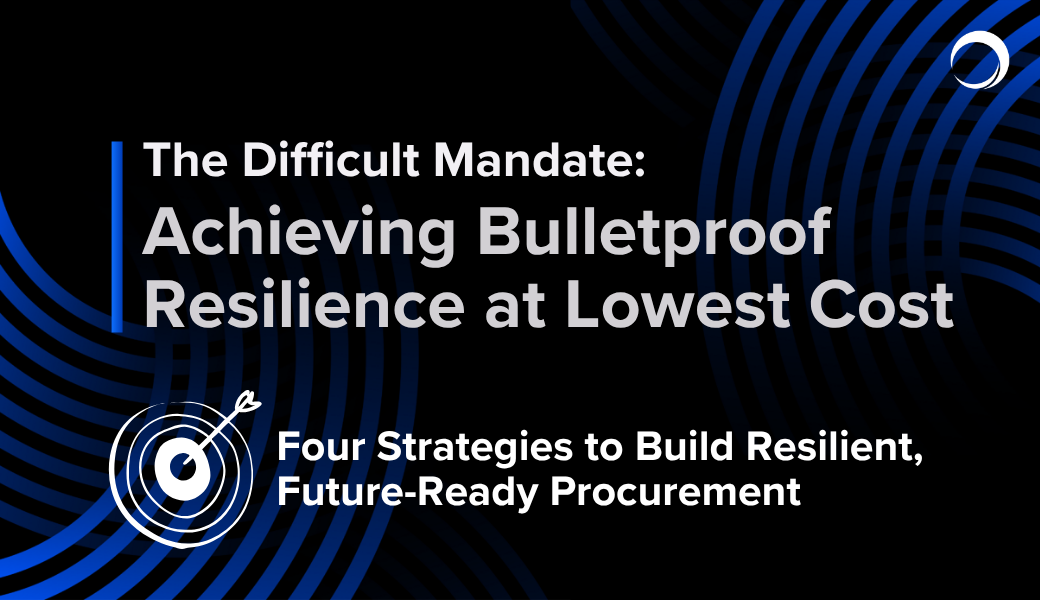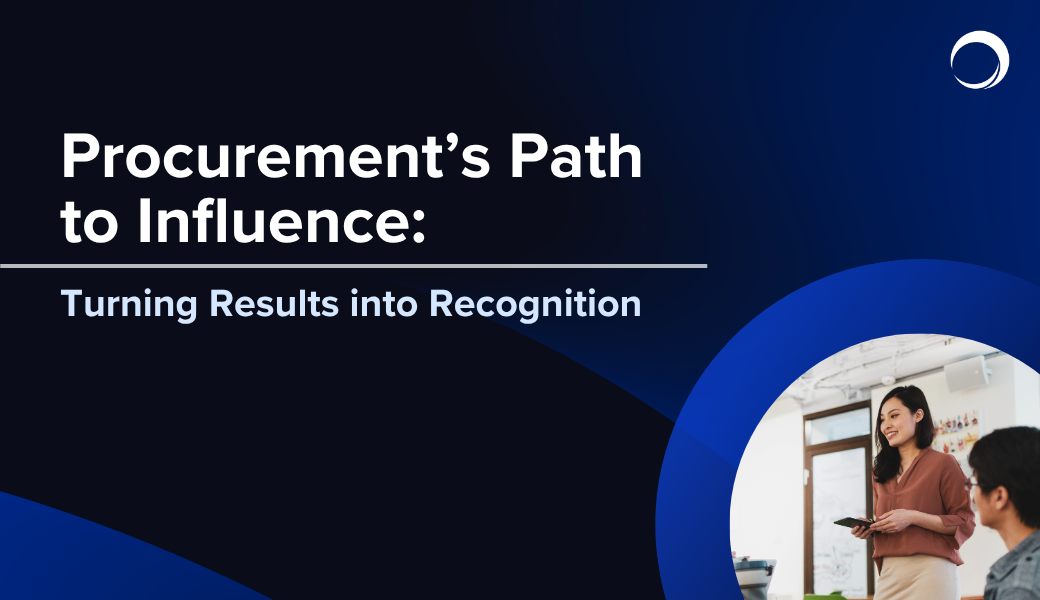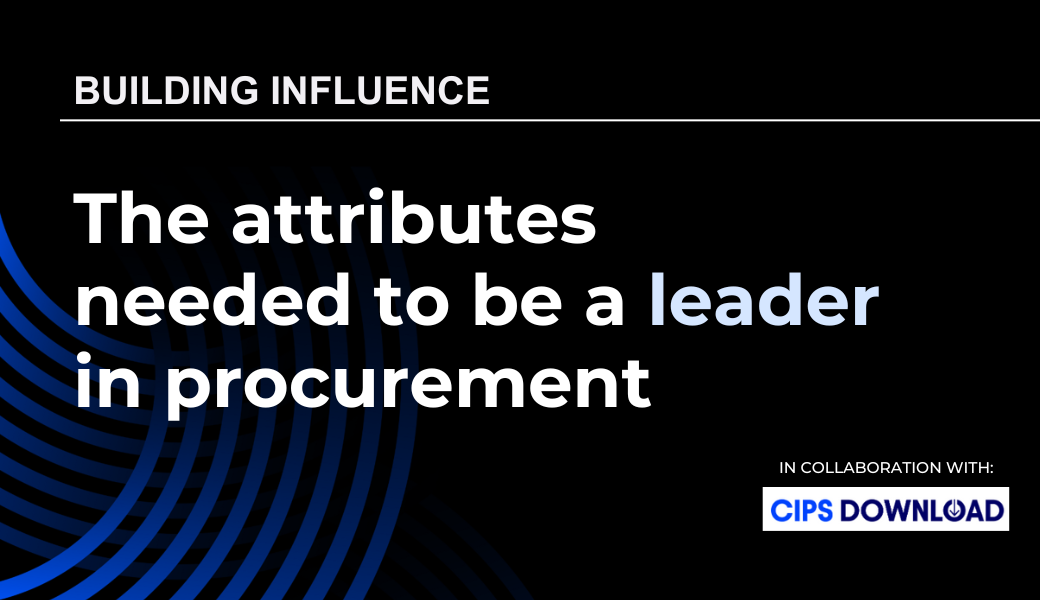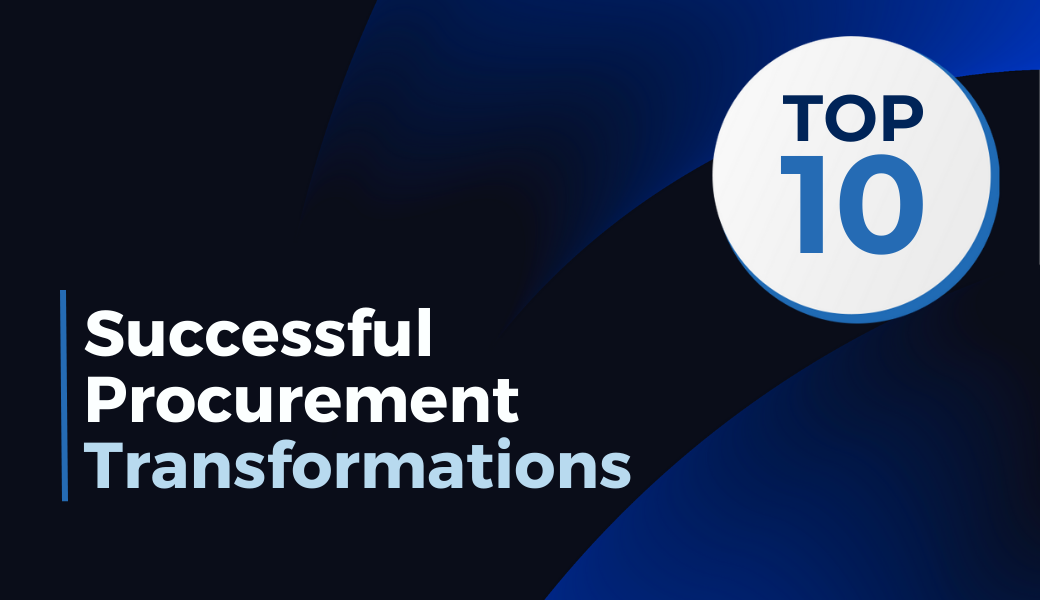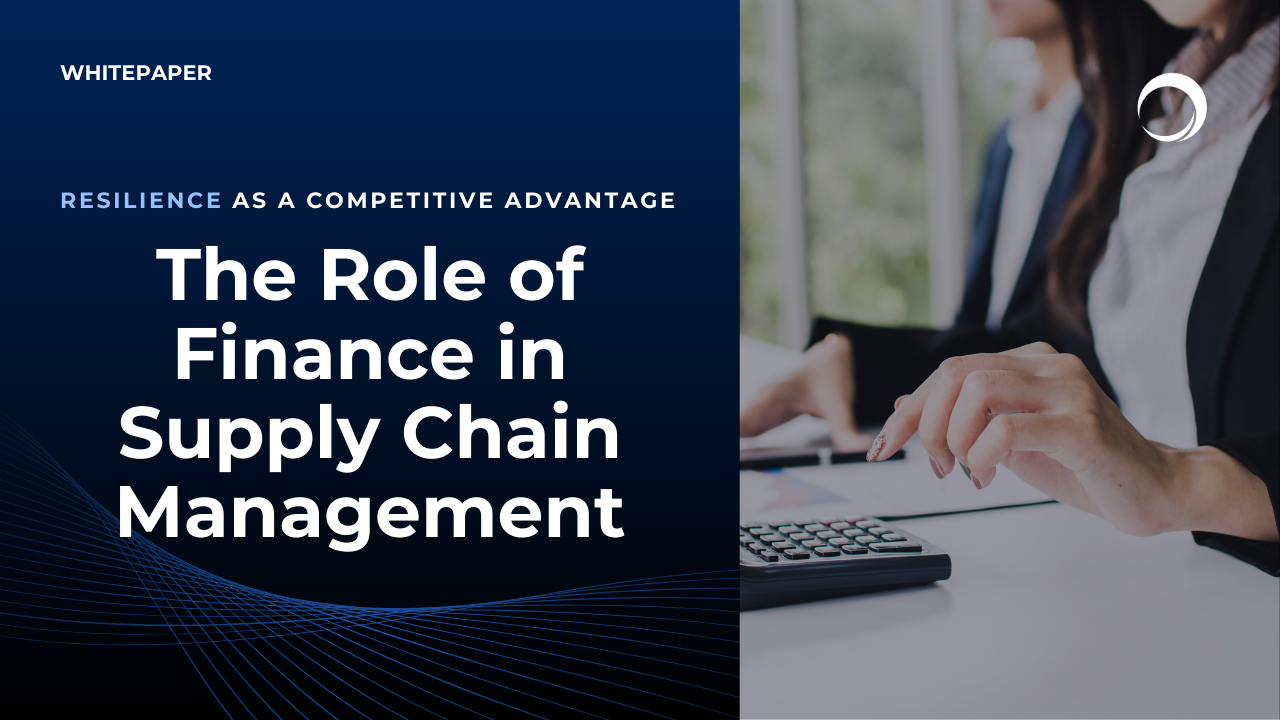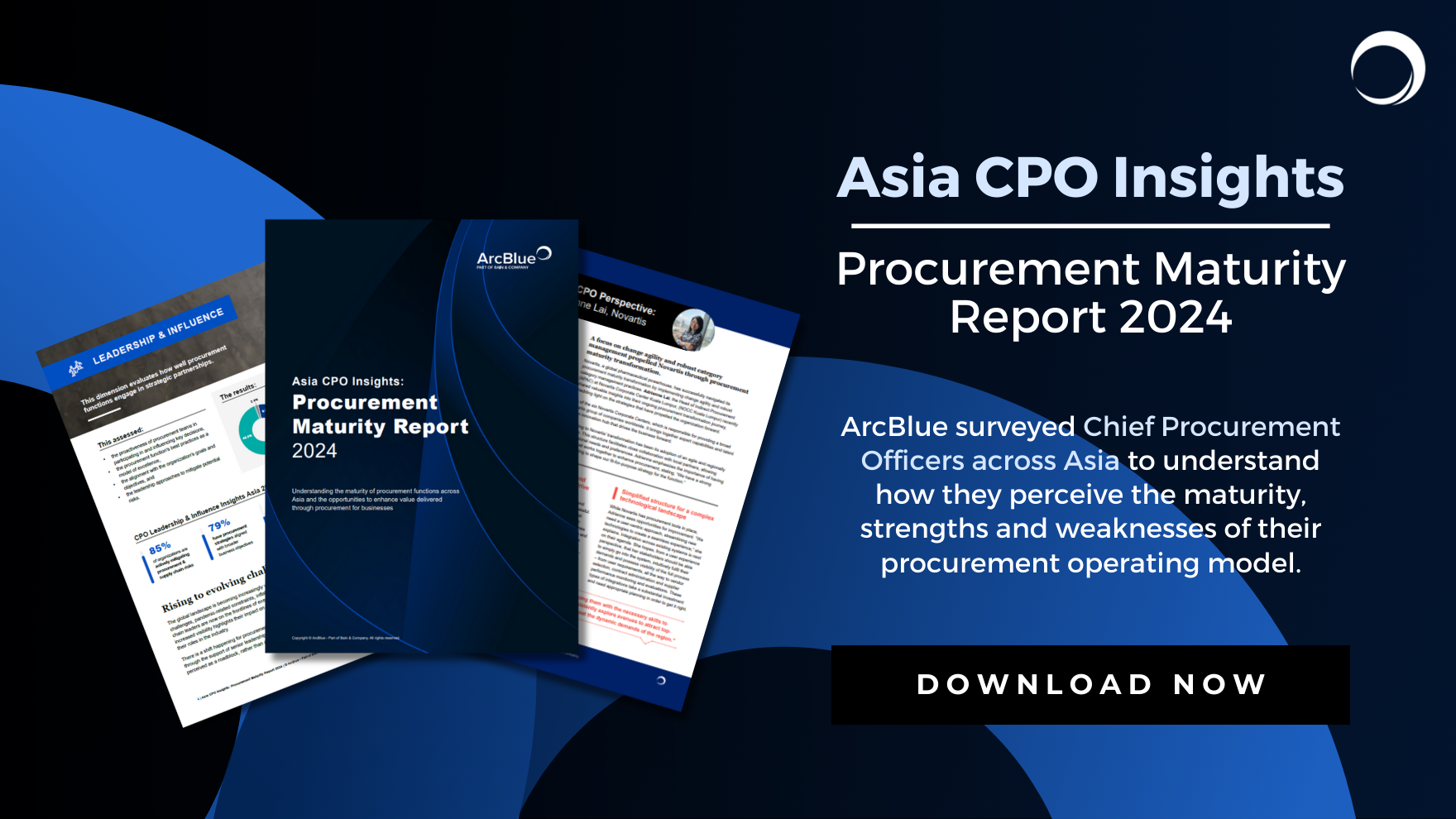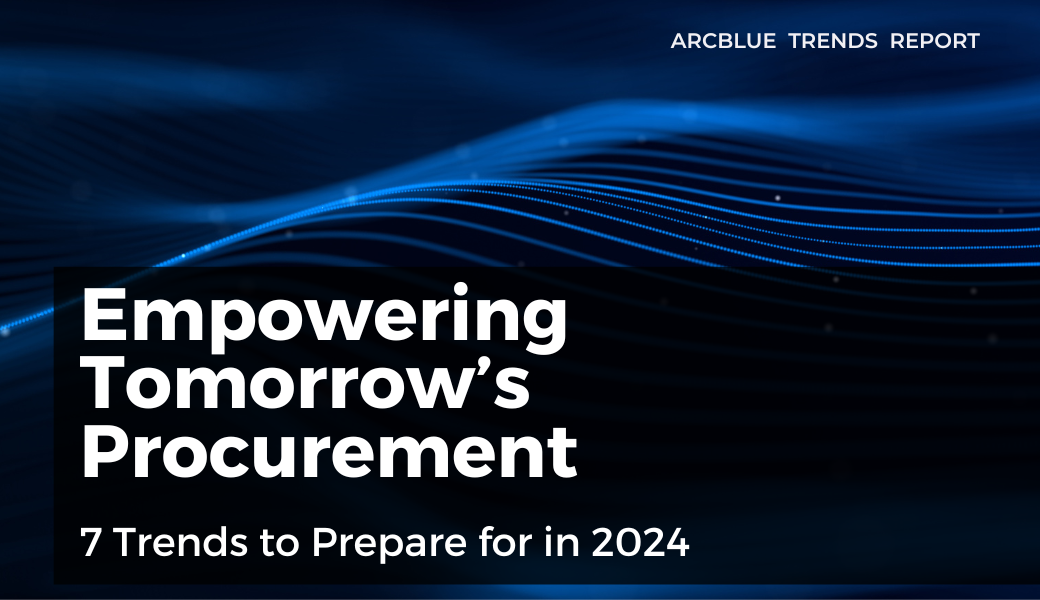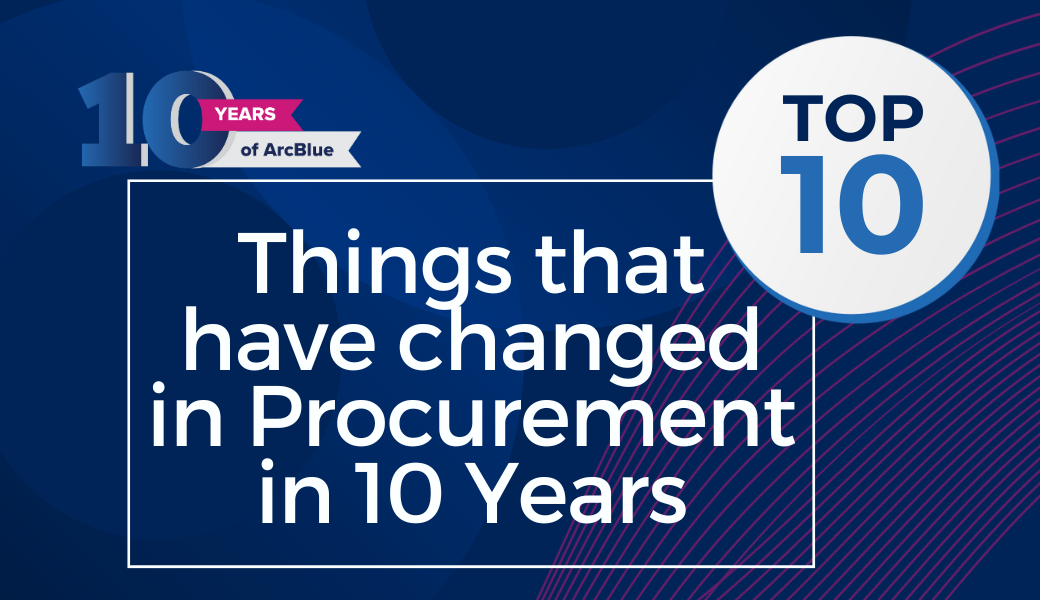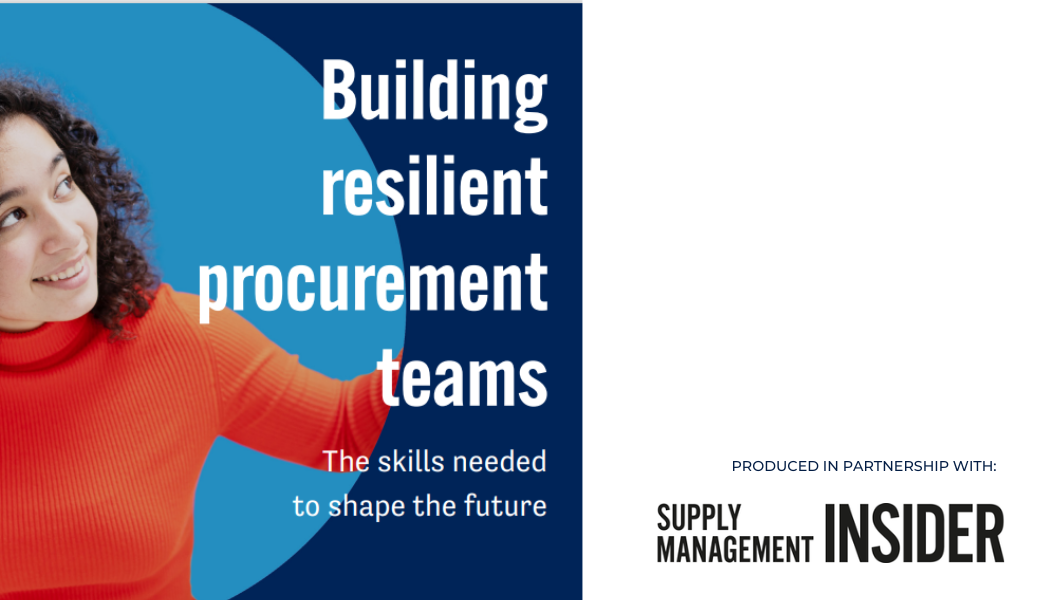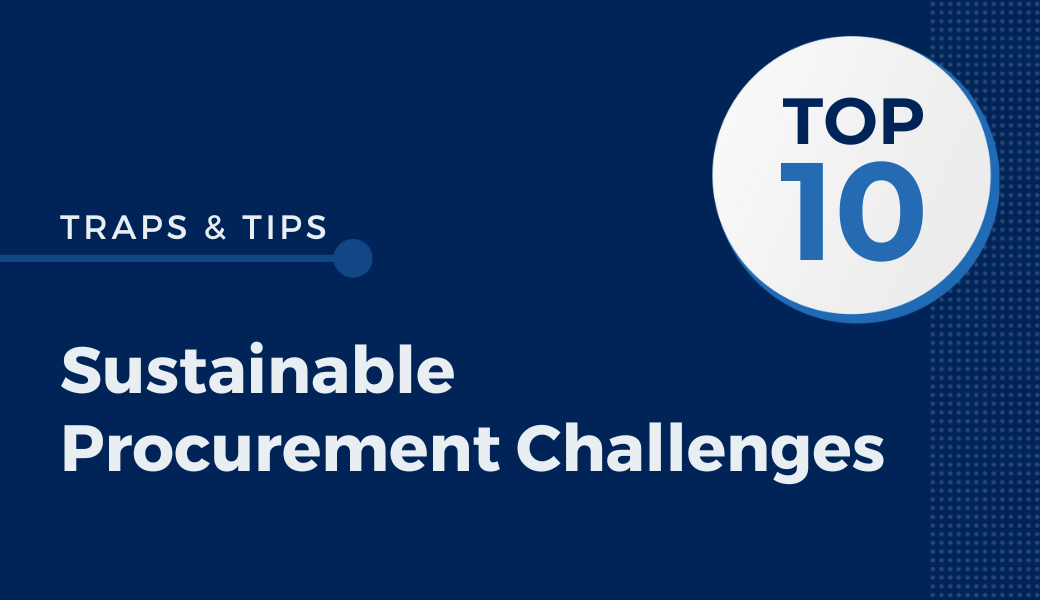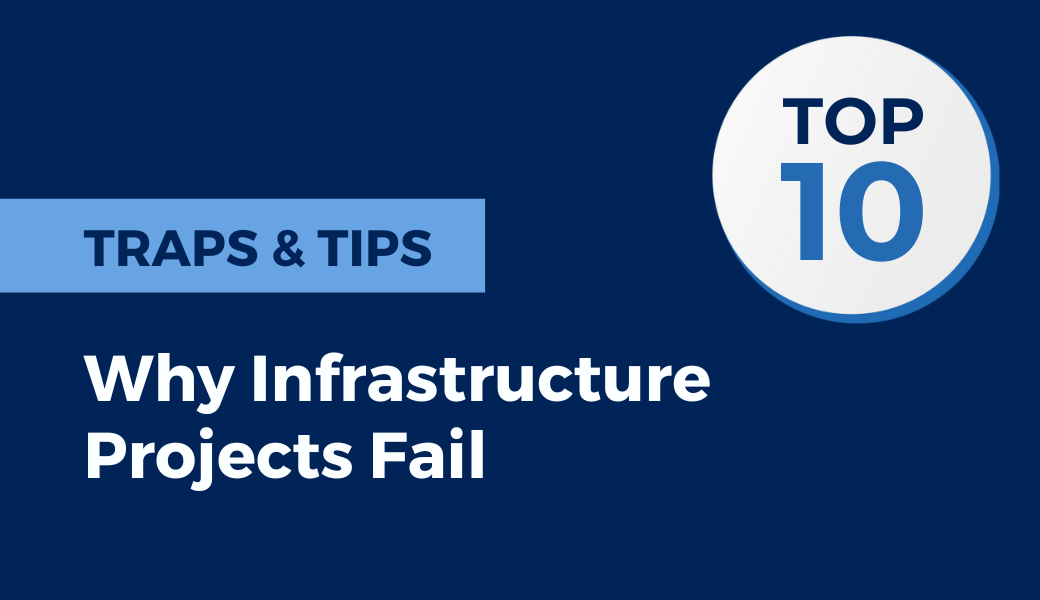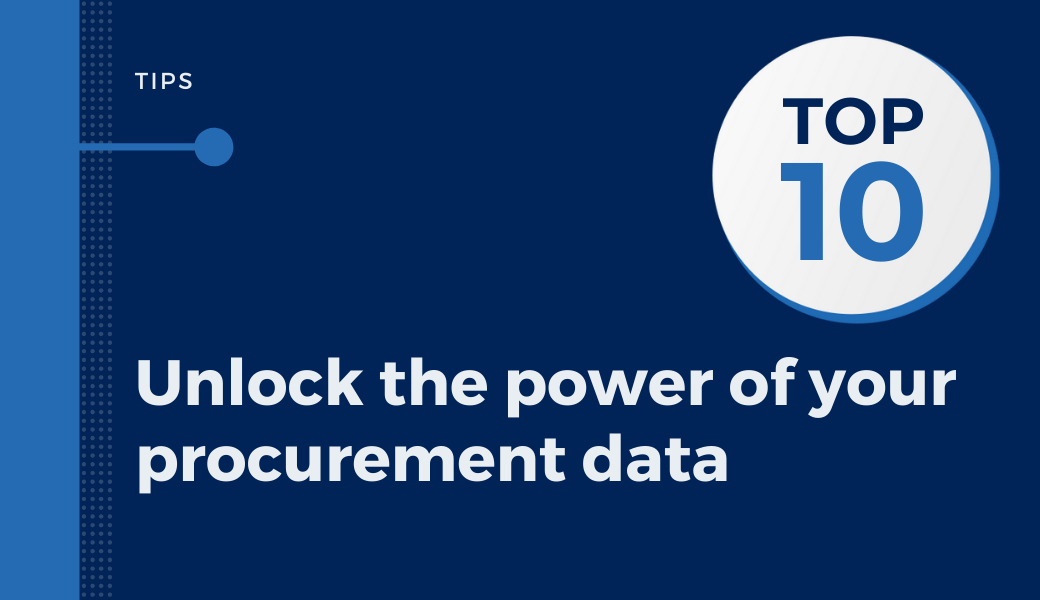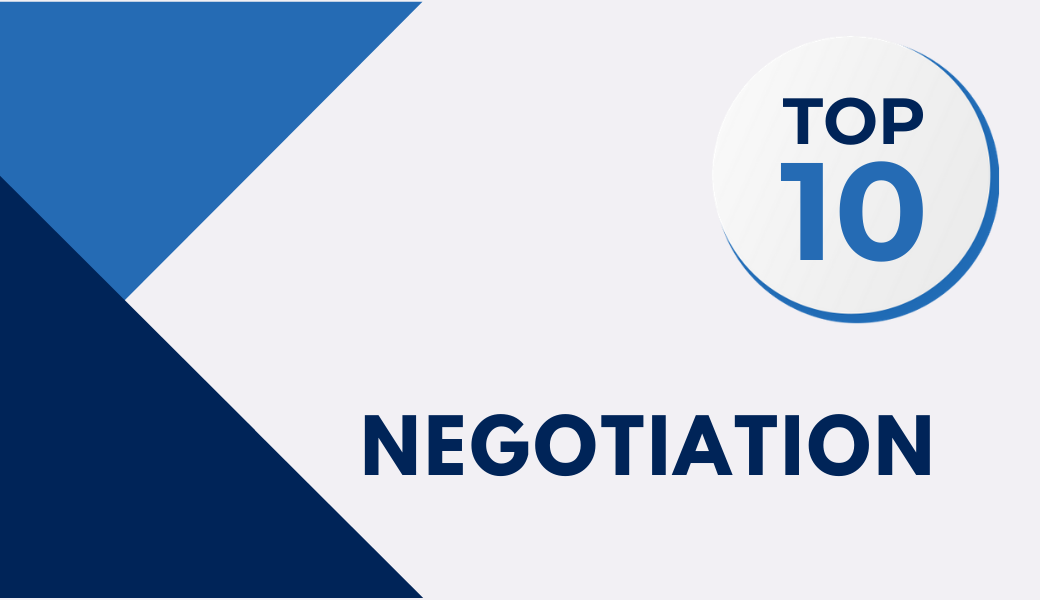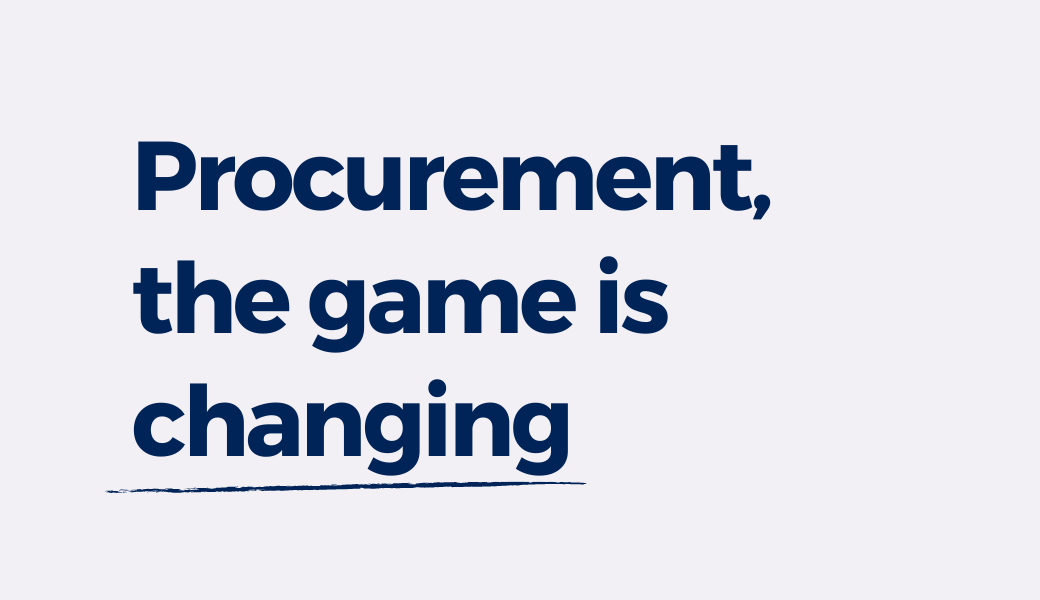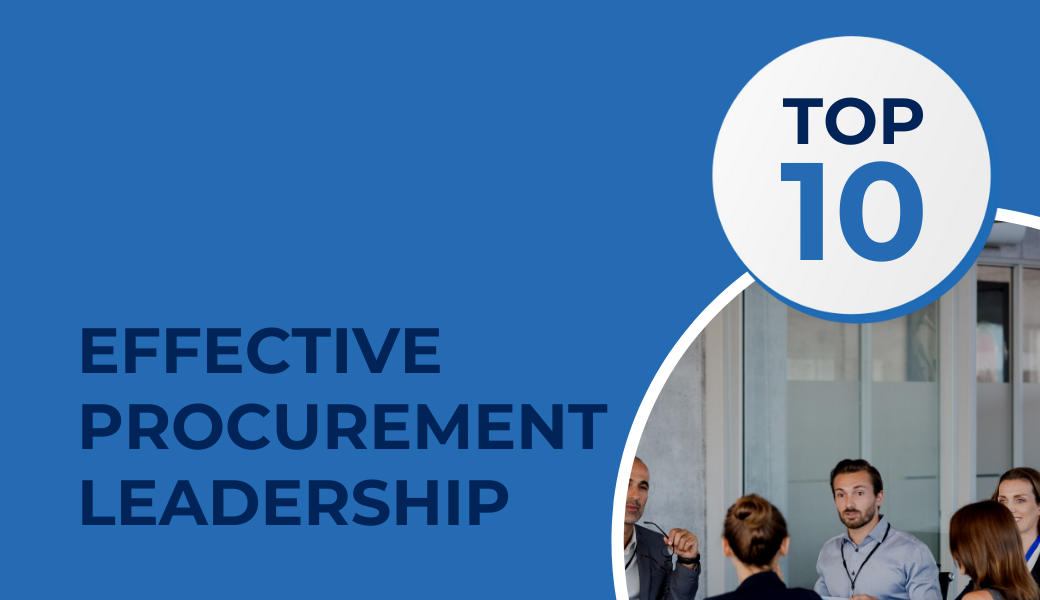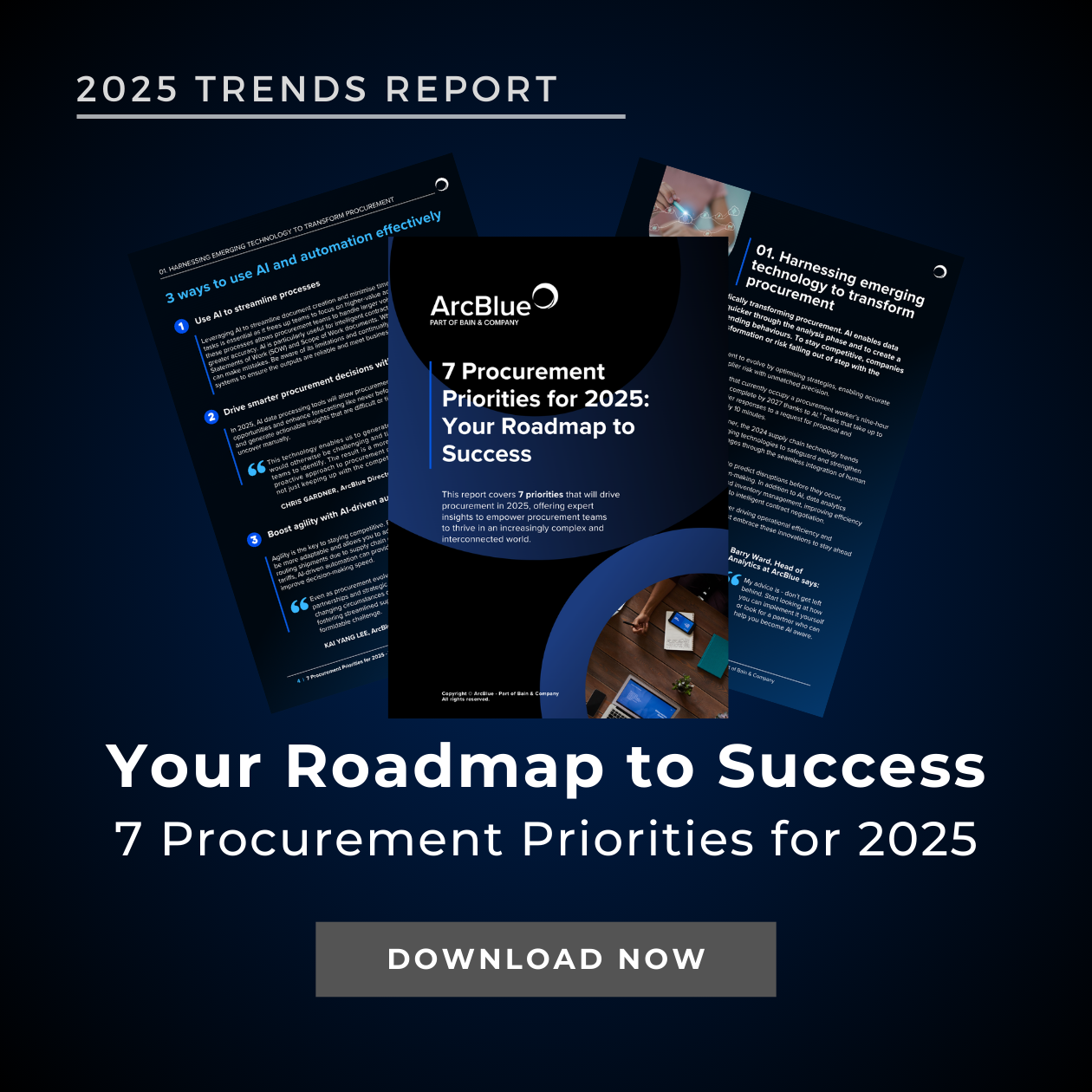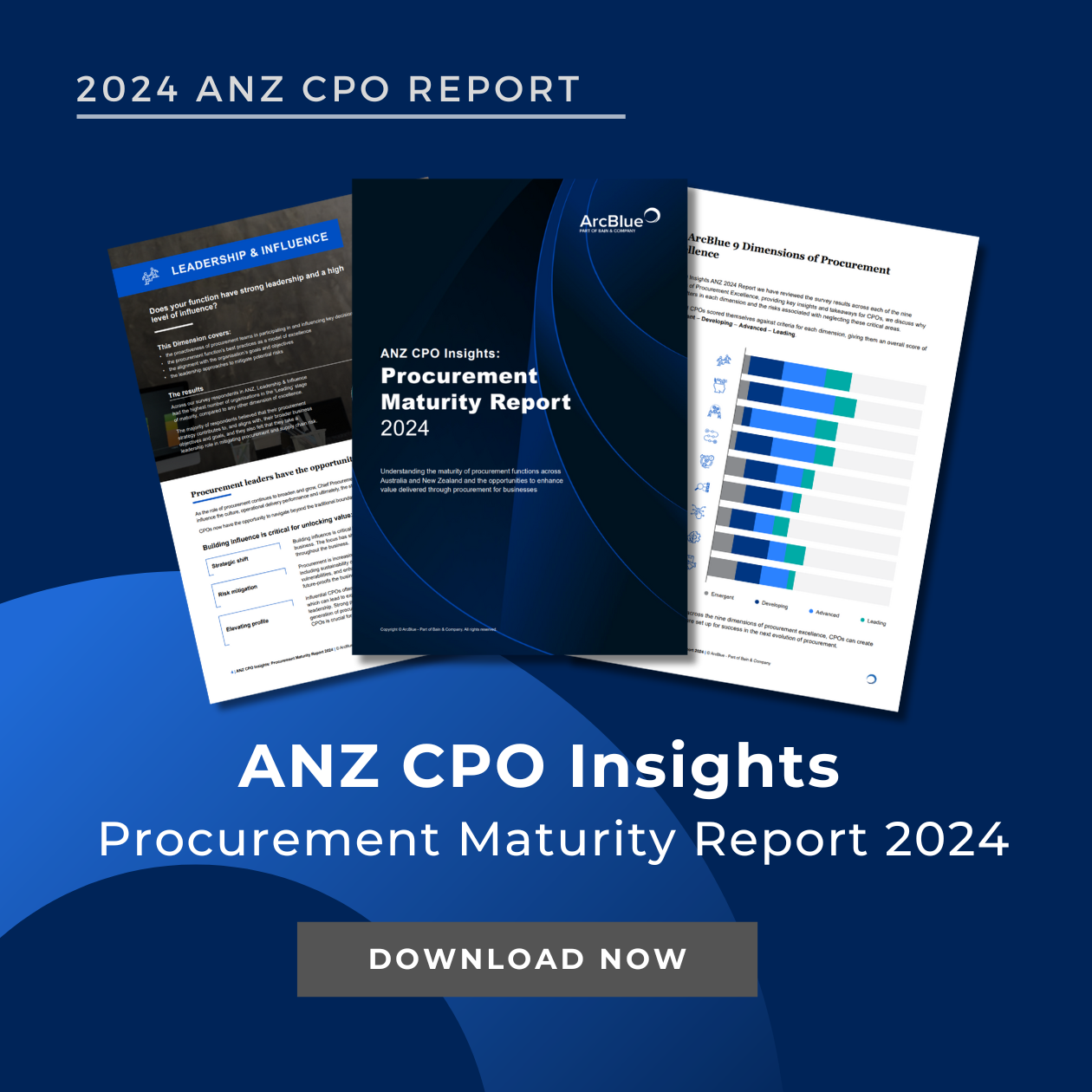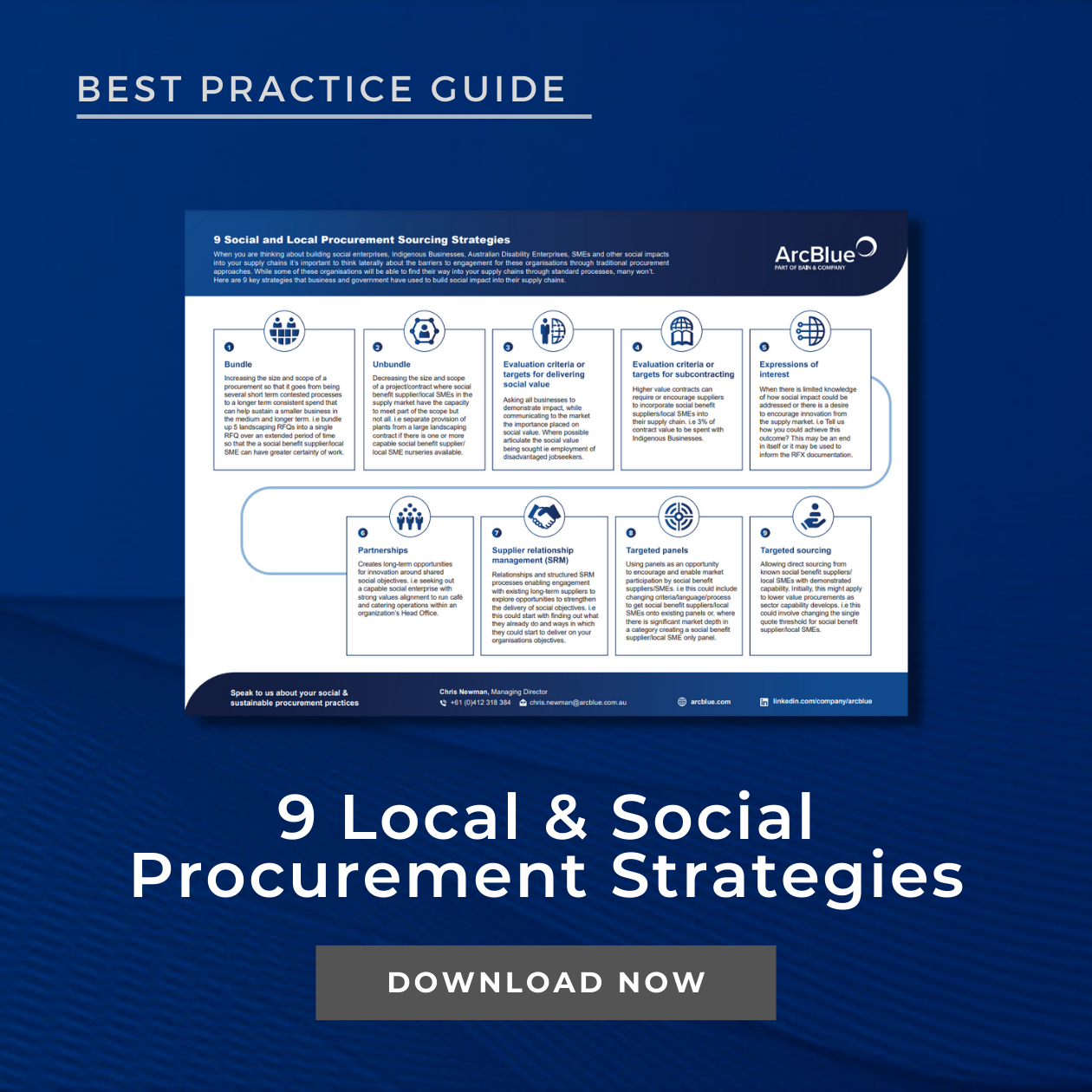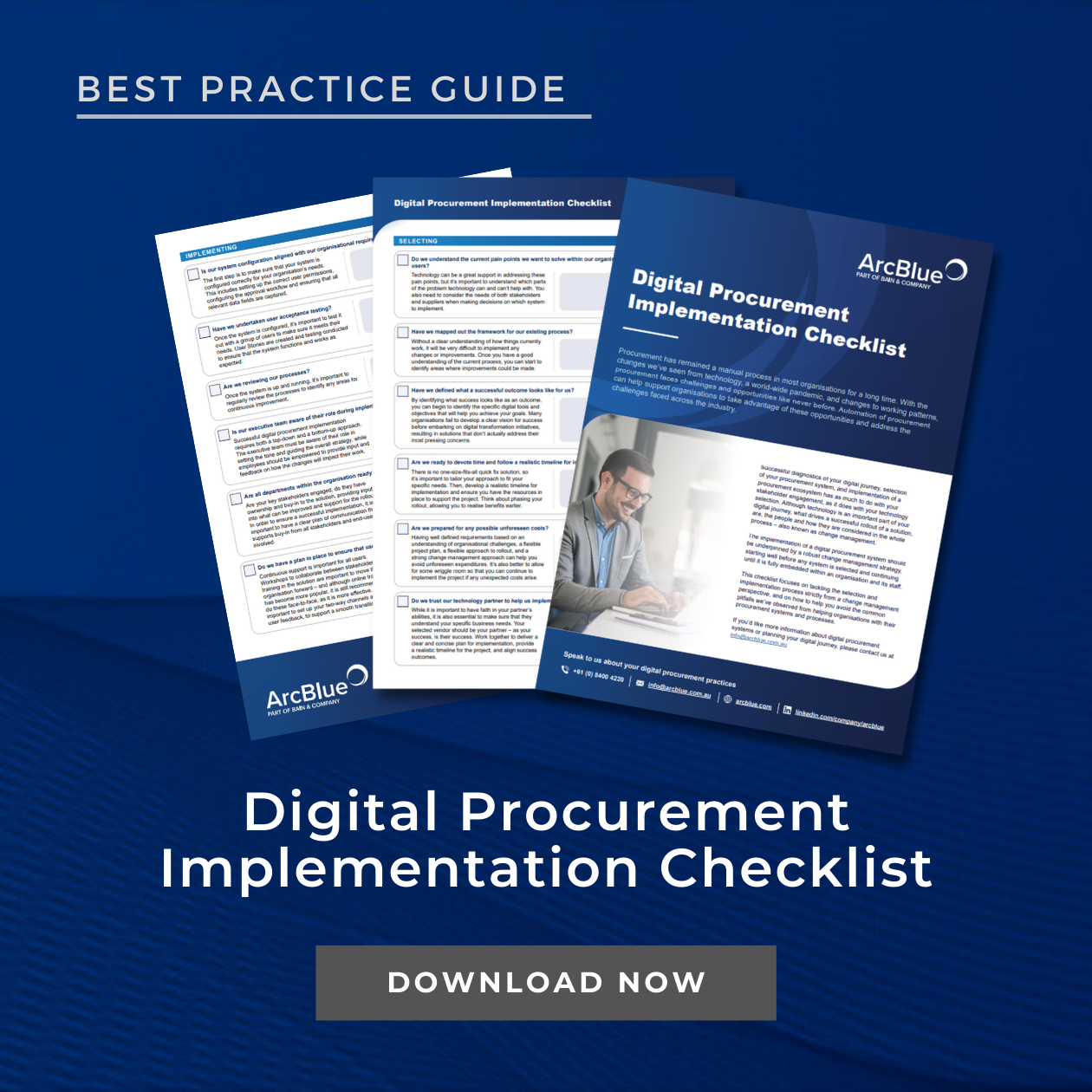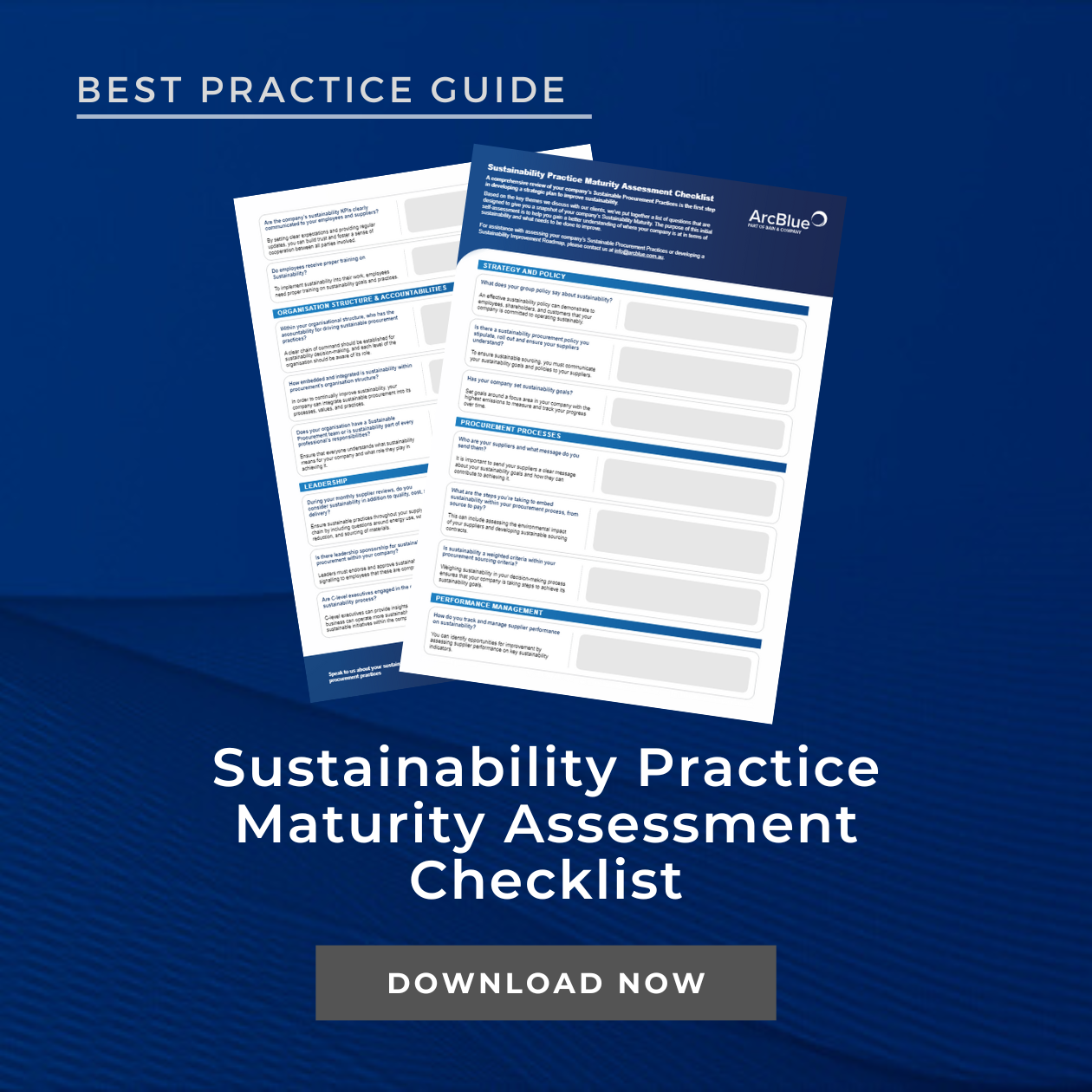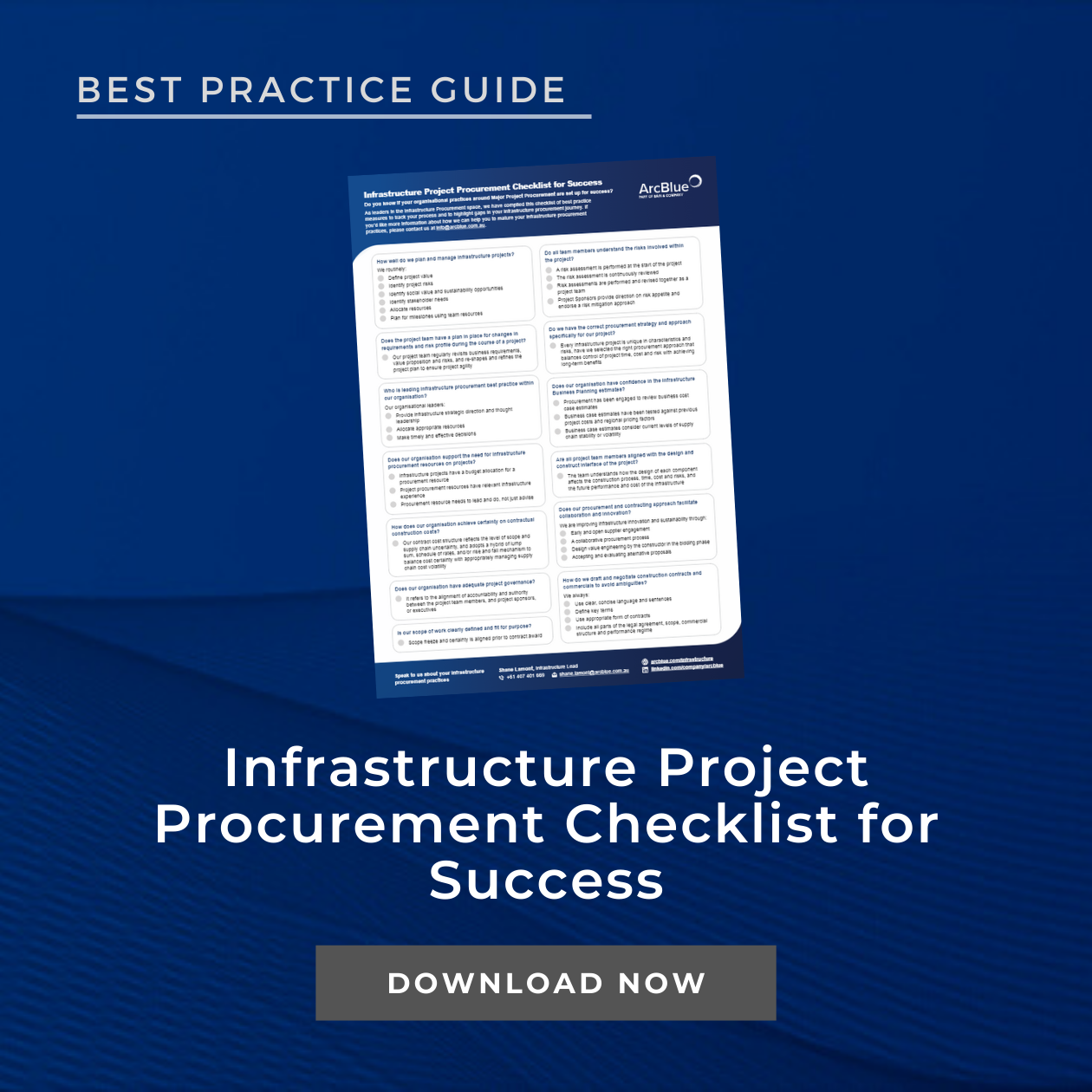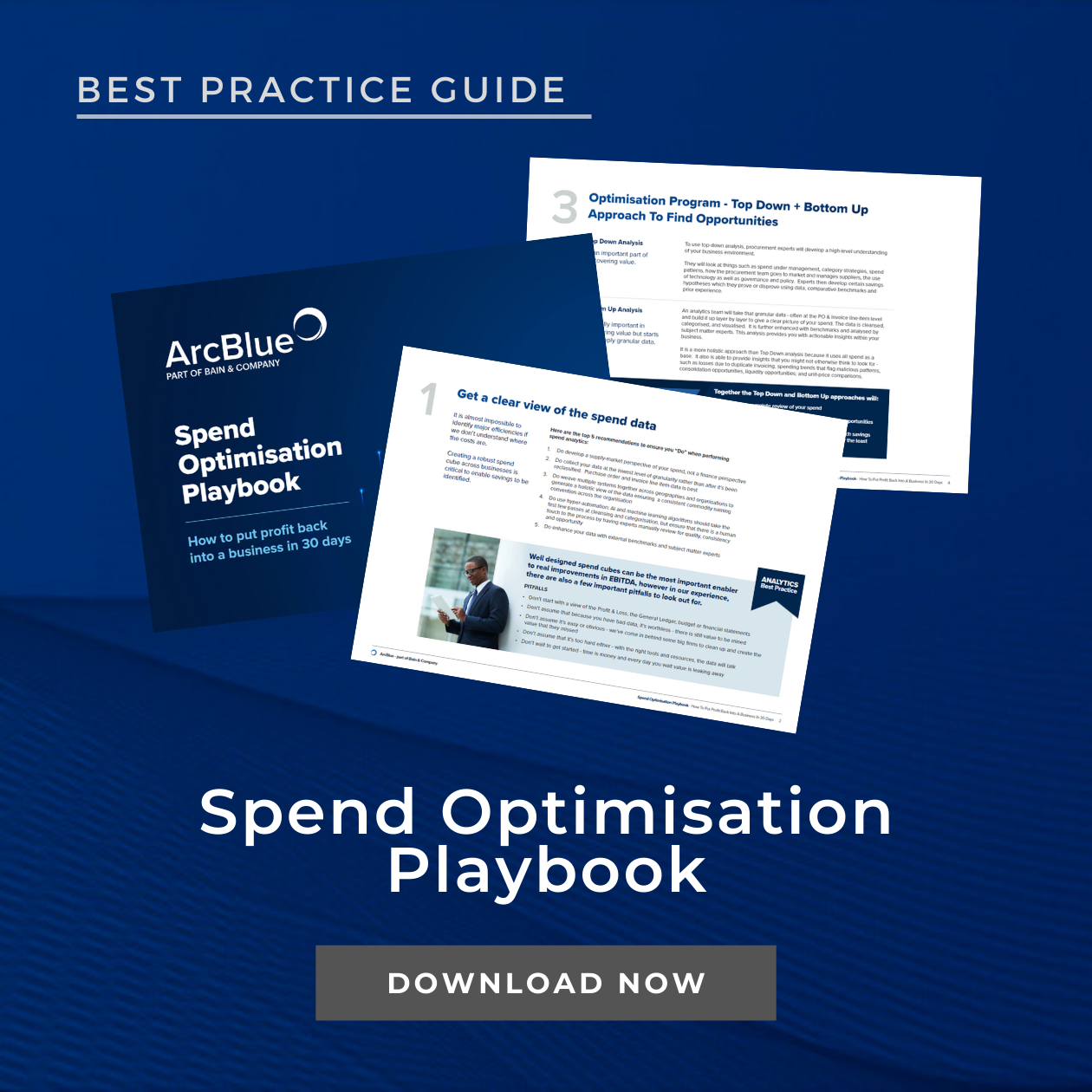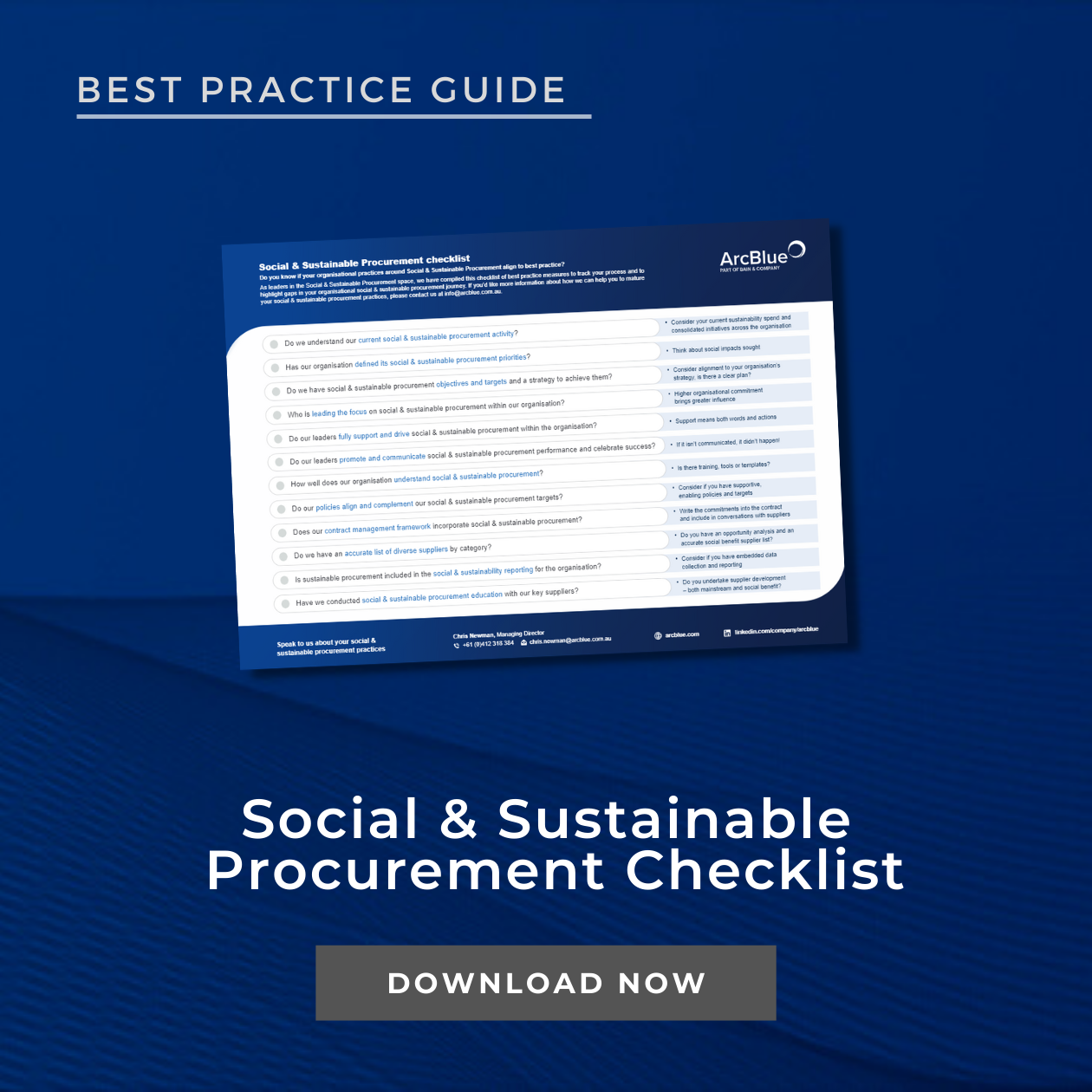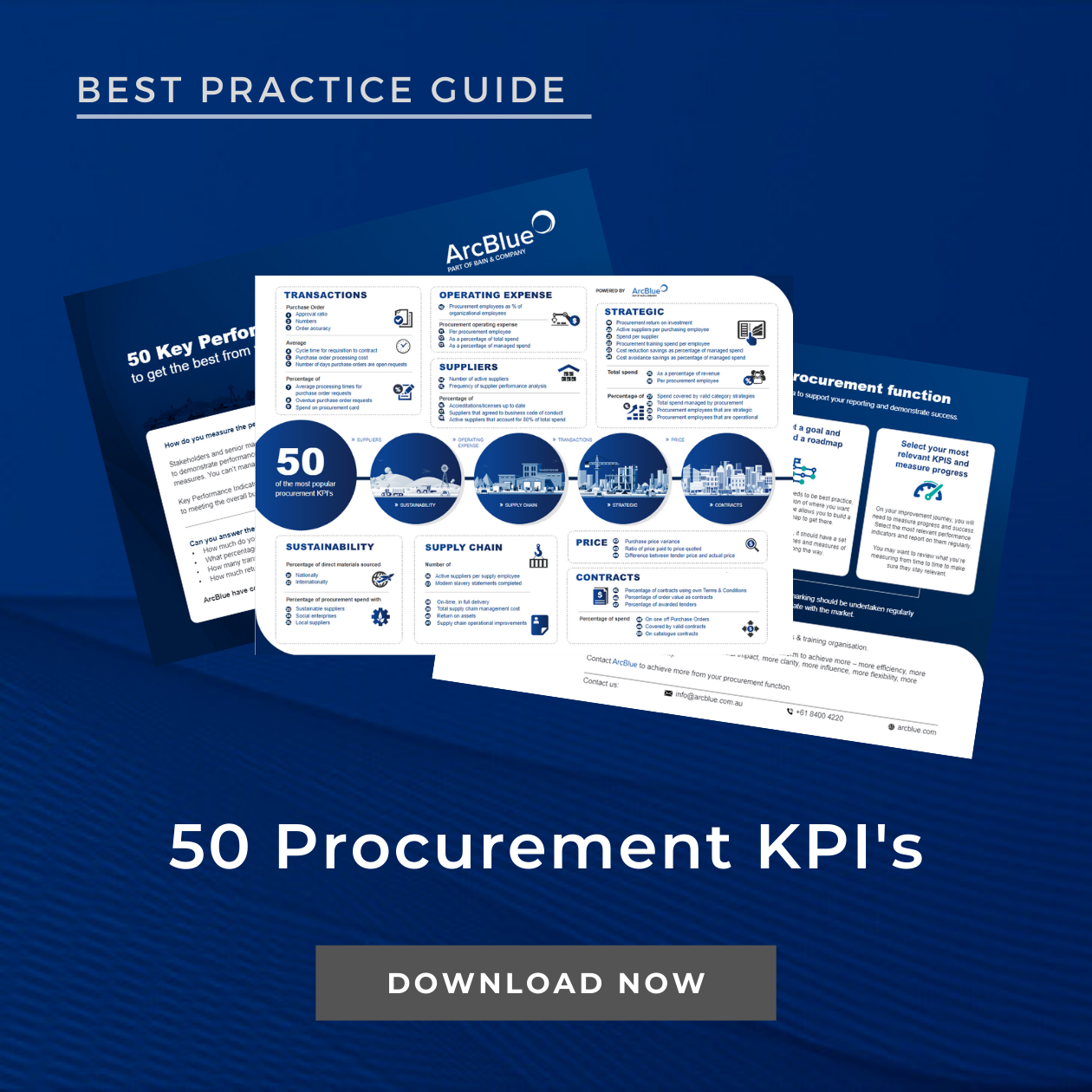- ARCBLUE REPORT
Empowering Tomorrow's Procurement
7 Trends to Prepare for in 2024
December 2023
Related Services
Related Sectors
Executive Summary
As we head into 2024, the doors open on a shifting procurement landscape marked by complex challenges calling for strategic adaptation.
Rising costs across the supply chain, pressure to execute on ESG commitments, a race to invest in digitisation and a complex energy transition are all challenges coming quickly over the horizon.
In the wake of a global talent crisis and with new capabilities required to succeed, procurement teams are not equipped to cope – yet. But with the right support, investment in expertise and training, alignment on strategic goals and a commitment to act, procurement functions can prepare themselves.
ArcBlue Managing Director, Dan Fielding says that “Now more than ever before, procurement has a window of opportunity to make a real impact – not only on the businesses that we work in, but to the world that we live in.”
In this report, we address 7 key trends to watch in 2024 with advice and tips from the experts on how organisations and procurement teams can prepare themselves to take action.
TREND 1: Organisations need to move fast on cost
A major priority for procurement and supply chain in 2024 will be to tackle cost. During 2023, costs rose across the supply chain and businesses have been grappling with higher prices for labour, materials, energy and transportation.
Moving into 2024, companies want and need to act now to mitigate these cost increases. Market trends are starting to show on financial accounts and as businesses move into planning cycles for 2024 and 2025, there is a feeling of urgency to get rising costs under control.
Many organisations, ranging from private sector to government, are seeking external help to optimise their operations, from procurement spend to operating structure, head count and organisational design.
How you can get ahead of rising costs:
TREND 2: Re-investing in procurement capability is crucial
If the greatest challenge for procurement in 2024 is optimising costs, ensuring the function has the right talent and capability to drive strategic value and cost value programs comes hand in hand.
Companies must continue to uplift procurement talent to become more strategic, focusing on business partnerships that deliver value. Mental agility and resilience are the key “ingredients” being requested of leadership roles.
A talent shortage and high turnover means that procurement departments are in a state of constant change and instability. Procurement teams are also seeing increased workloads and a mismatch of capability within the team to the projects they’re being asked to execute.
How you can get ahead of a talent crisis:
TREND 3: It’s crunch time for ESG
Over the last five years, we’ve seen companies make commitments to ESG targets in the face of mounting pressure from government, shareholders, consumers and employees.
In 2024, the focus is shifting to how those companies are going to deliver and report on their sustainability commitments – from de-carbonisation to modern slavery to social impact.
Producing consolidated ESG reporting will be vital for organisations to deliver on ESG targets. There is a significant capability gap emerging for companies to capture and measure data related to Scope 3 carbon emissions, an area that is once again pushing procurement and supply chain into the spotlight across many organisations.
Robust impact measurement and social valuation will become more and more important. Leading companies are now setting ambitious social value targets alongside Net Zero.
How you can get ahead on sustainability commitments:
TREND 4: Diversifying supply chains will build resiliency
Risk and resiliency remain front of mind for procurement and supply chain leaders. Shipping markets remain highly volatile. Airfreight is still limited as airlines slowly return to full capacity and look to recover losses of the pandemic years.
Global geopolitics remains a threat, with continuing wars resulting in sanctions disrupting commodity markets, nervousness in oil markets and an increasing sense of protectionism everywhere.
Cyber risk is front of mind with mounting supply chain cyber attacks threatening the growth of businesses and impacting governments and critical infrastructure. According to Cybersecurity Ventures, cybercrime is projected to cost $10.5 trillion in damages by 2025. ¹
Organisations are moving to diversify their supply chains to improve resiliency, whether that be near shoring or re-shoring, without disconnecting relationships with established suppliers, explains Keith Gauntlett, Director at ArcBlue. In doing so, procurement should be vigilant to ensure new suppliers are compliant and adhering to regulations like modern slavery and net zero strategic ambitions.
Procurement leaders will need a much deeper view of their supply chain vulnerability and exposure in order to minimise and mitigate risk. Gaining visibility and building resilience requires investment and companies will need to balance how they pay for it. Options could include absorbing the costs, sharing them with suppliers or raising prices for customers.
How you can get ahead of supply chain constraints:
TREND 5: Digital transformation is snowballing
The growth in digital procurement technology will continue to accelerate throughout 2024, with a special focus on iterations in AI, Procure-to-Pay software, blockchain and robotics.
A 2023 survey of global supply chain leaders predicted that 73% of supply chain technology budgets will be allocated to growth and performance enhancements this year. The most sought after technology is actionable AI and smart warehousing, mobile asset management and cloud platforms, and technology that scales performance, integrating processes and mitigating against cyber risk. ³
Whilst investment in digital transformation will grow in 2024, it comes with a large caveat. Technology is part of the solution but it is not the solution. Chris Hampden cautions that technology must be implemented with effective processes, structure and capable people. Technology alone will not fix everything.
How you can get ahead in your digital transformation:
TREND 6: If data is King, leveraging it is the Ace
Spend data analytics and its associated insights will be essential for procurement teams to succeed in 2024. Many procurement functions still lack expertise in data management, especially across compliance, Modern Slavery, risk and carbon reporting.
Without the ability to leverage their spend data, procurement will miss out on key opportunities to optimise costs, drive sustainability and mitigate risk throughout their supply chain.
“While investment in data technology continues, many procurement teams face the challenge of lacking the necessary skills to interpret and derive intelligence from the data,” says Keith Gauntlett, ArcBlue’s Director for Hong Kong and China. Developing these skills will help procurement meet the hefty targets and objectives placed on the function. For example, when it comes to Scope 3 emissions and carbon reporting, insights gleaned from spend data will allow procurement to proactively identify key categories and suppliers to focus on to reduce the organisation’s carbon footprint.
How you can get ahead leveraging your data:
TREND 7: Procurement needs to be prepared for the energy transition
The energy sector is in the midst of a sweeping global transformation towards green energy and decarbonisation. The coming energy transition will be especially complex for organisations to navigate. Businesses will need to reengineer processes and roles in order to balance their goals of sustainability with affordability and reliability.
For procurement, the function will be challenged to quickly develop new skills and expertise to fully grasp new technologies, new players and ecosystems. The surge in renewable projects will bring supply chain risks like prolonged lead times in sourcing components, intensified demand, price hikes and scarcity of supply. Businesses will have to make tough choices on where they are sourcing from, how robust their supply chains are and how to get the best prices.
To manage these challenges, procurement teams need to be skilled up and the business aligned on an informed strategy to mitigate risks, capitalise on opportunities and be on the front foot when it comes to transitioning to a renewable future. “Act early, and act decisively,” is the unequivocal advice here from ArcBlue Director, Justin Sara.
How you can get ahead in the energy transition:
Conclusion
The path ahead for procurement is complex and challenging but the opportunities for the function to continue to develop into a key strategic player are clear.
“While what lies ahead is challenging, our ability to rise to these challenges is why being in procurement and supply chain has never been more exciting, or more important,” says Chris Newman ArcBlue Managing Director.
Embracing new technologies and harnessing data will be game changing, guiding decisions and unlocking untapped opportunities. Developing talent and building strong relationships between business functions and throughout the supply chain will transform procurement teams into strategic thinkers, ready for tomorrow.
By leveraging the digital landscape in 2024, and preparing and committing to strategies, procurement can chart a course towards a future where its role extends beyond value creation to actively contributing to global sustainability.
¹ Cybersecurity Ventures, “2023 Official Cybercrime Report” (p. 6)
² David Marin- Guzman, “DP World shuts down ports after hack”, Australian Financial Review, Nov 2023 (p. 6)
³ Gartner, “Gartner reveals the top supply chain technology trends for 2023” May 2023 (p. 7)
INSIGHTS
RESOURCES & DOWNLOADS








